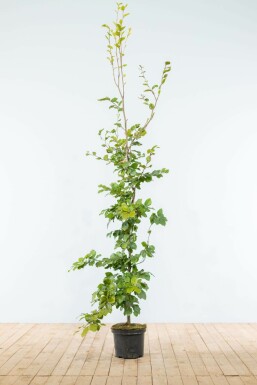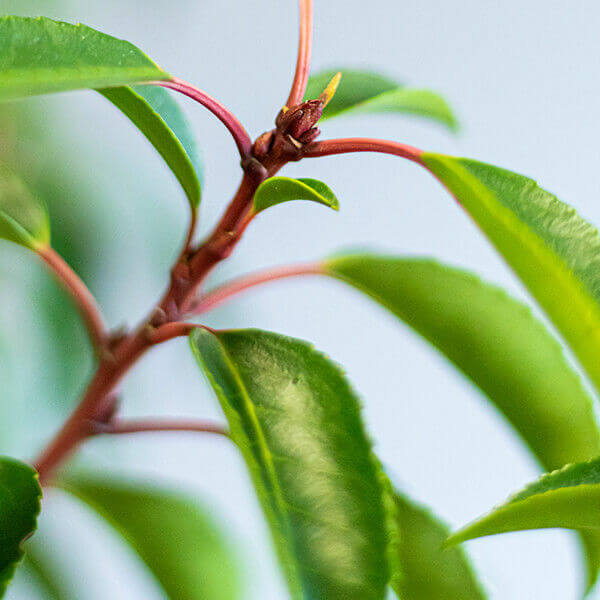Hedge Plants For Garden Rooms
Hedge Plants For Garden Rooms
Blog Article
Hedge Plants For Wildlife Corridors
Boost your garden's allure with lush hedge ranges such as Yew (Taxus), Thuja, Laurel, Photinia, and Bamboo, celebrated for their structural stability and environmental advantages.
Yew and Thuja provide evergreen protection and winter season durability, while Laurel uses rapid development and broad, fragrant leaves.
Photinia adds seasonal beauty with its dynamic red foliage, and Bamboo provides a low-maintenance, serene atmosphere.
These hedges improve air quality, lower noise, and produce tranquil, personal spaces.
Correct planting, spacing, and maintenance guarantee energetic development and environmental consistency.
Explore how these rich ranges can raise your garden's beauty and well-being.
Key Takeaways
Transform Your Garden With Lush Hedge Ranges
- Select Yew for its dense, evergreen development and unparalleled longevity.
- Select Laurel for its quick development and broad leaves, ensuring quick privacy.
- Select Photinia for its dynamic seasonal foliage, which turns a striking dark red.
- Use Bamboo for a low-maintenance, winter-hardy hedge with visual appeal.
- Area plants 2-3 per meter and prune frequently for optimum development and health.
Popular Hedge Plants
When transforming a garden with lush hedge varieties, it's necessary to consider popular hedge plants such as Yew, Thuja, Laurel, and Photinia due to their special qualities and advantages.
Yew (Taxus) is extremely respected for its longevity and dense, green growth, making it a prime choice for enduring landscapes.
Thuja is kept in mind for its evergreen foliage and robust winter season strength.
Photinia includes seasonal vibrancy with red leaves that darken over time, producing dynamic visual appeal.
Laurel offers rapid growth and fragrant, broad leaves, ideal for quick privacy.
Additionally, Bamboo is an exceptional option for atmosphere, providing a low-maintenance, winter-hardy choice that enhances the garden's aesthetic with its elegant, swaying walking canes.
These selections cater to a range of horticultural needs and choices.
Benefits of Garden Hedges
Garden hedges offer a wide range of benefits, making them a valuable addition to any landscape. These natural barriers are cost-efficient to carry out and offer significant wind defense, enhancing air blood circulation and adding to noise decrease. The dense foliage of hedges like Thuja and Beech makes sure personal privacy by blocking visibility, creating a tranquil and remote environment.
Hedges likewise play a crucial function in microclimate policy, supplying a stable environment that cultivates plant development and minimizes temperature level variations. Their intricate leaf structures filter toxins, improving air quality and adding to a healthier garden environment.
Moreover, hedges master sound reduction, taking in and deflecting acoustic waves to lower ambient noise levels. This dual performance of providing both acoustic and visual personal privacy enhances the overall serenity and visual appeal of any garden.
Planting and Upkeep Tips
For a successful hedge, meticulous preparation of the planting area is important. Make sure the soil has correct pH and drain to support strong root development.
Space the plants properly for the selected types. Water the hedge often throughout its initial development stage, adjusting as needed with seasonal modifications.
Carry out a systematic insect control and illness avoidance strategy, using chemical or natural treatments when necessary. Regularly examine for aphids, termites, and fungal infections.
Apply mulch to maintain wetness and reduce weeds. Seasonal pruning promotes dense development and air circulation, vital for plant health.
Following these standards will help you cultivate a dynamic, properly maintained hedge that enhances the charm of your garden.
Spacing and Cutting Standards
Spacing and Trimming Guidelines
Proper spacing and cutting are vital for cultivating healthy, aesthetically appealing hedges. Sufficient spacing ensures each plant gets sufficient nutrients, light, and airflow.
Follow these standards for ideal hedge maintenance:
- Spacing: Position hedge plants 2-3 plants per meter to motivate robust growth.
- Pruning Techniques: Routine pruning is vital for maintaining desired hedge height and shape. Cut brand-new growth in summer season and cut back older wood throughout winter season.
- Seasonal Care: Adjust cutting schedules and techniques according to seasonal requirements to guarantee plant health.
- Hedge Height: Regularly display and trim to keep the preferred hedge height and attain uniform aesthetic appeals.
Abiding by these actions will guarantee your hedge prospers, enhancing both the appeal and performance of your garden.
Picking the Right Hedge
Selecting the Right Hedge
Picking the appropriate hedge includes evaluating elements such as fully grown height, foliage density, and environmental durability. Effective hedge plant selection requires comprehending each species' growth attributes and site-specific adaptability.
For example, Yew (Taxus) provides exceptional longevity and dense development, while Thuja is significant for website its winter season resilience. Furthermore, considering maintenance requirements is important; fast-growing species like Laurel or Privet need regular trimming, whereas low-maintenance alternatives like Bamboo or Ivy might be more effective for those looking for minimal upkeep.
Environmental factors such as soil type, light schedule, and wetness conditions need to likewise assist the selection procedure. This mindful technique makes sure the selected hedges will prosper, supplying both functional and visual advantages to the garden landscape.
Shipment and Planting Guidance
To ensure your hedge plants flourish, they should be delivered by specialized couriers and planted quickly upon arrival.
Follow these important steps for effective planting:
- Soil Preparation: Improve the soil with raw material to enhance drainage and nutrient content.
- Planting Depth: Create a trench two times the width and equivalent to the depth of the root ball.
- Watering Methods: Water thoroughly after planting, keeping the soil regularly damp but not saturated.
- Mulching: Use a layer of mulch to keep moisture and reduce weeds.
Client Support and Service
Offered the important role of prompt support in horticultural pursuits, our consumer support team is available six days a week through telephone, e-mail, and social networks to provide skilled advice and swiftly resolve any concerns. Their dedication to fast reaction times ensures customer satisfaction by solving inquiries related to plant health, optimal planting methods, and upkeep schedules.

Reaction Time
Within 24 hours
This comprehensive support group, enhanced by a stellar 9.3/ 10 consumer score, highlights our commitment to boosting the gardening experience for each client.
Regularly Asked Questions
The Length Of Time Does It Take for Hedge Plants to Develop?
Hedge plants normally require one to three years to end up being fully developed, with the precise period differing by species and growing conditions.
Reliable care throughout this crucial period is necessary for robust growth. Constant watering, vigilant weed control, and appropriate fertilizer application are pivotal in promoting strong root advancement.
For instance, fast-growing species like Laurel might establish faster, while slower-growing ranges such as Yew might take longer. Persistent upkeep accelerates the facility process, resulting in healthy and thick hedges.
What Are the very best Hedge Plants for Privacy?
The concern of the very best hedge plants for privacy involves examining evergreen and deciduous options.
Evergreen hedges like Thuja, Laurel, and Cypress offer year-round protection, guaranteeing constant privacy.
In contrast, deciduous hedges such as Beech provide seasonal personal privacy, shedding leaves in cooler months.
Secret upkeep tips for personal privacy hedges consist of routine cutting, fertilizing in spring, and correct spacing-- usually 2 to 3 plants per meter.
In addition, constant watering and thorough weed elimination are vital for promoting healthy, thick development.
Can Hedge Plants Bring In Wildlife to My Garden?
Yes, hedge plants can bring in wildlife to your garden by providing essential benefits like shelter, food, and nesting websites, therefore boosting regional biodiversity. Yew, holly, and laurel are exceptional for attracting birds, while ivy supports a variety of bugs.
However, it's essential to keep in mind that there are some disadvantages, such as increased upkeep to handle pests and routine maintenance. Thoroughly picking and preserving hedge ranges can help balance these drawbacks and benefits, ultimately fostering a sustainable and lively community in your garden.
Are There Any Blooming Hedge Plants Available?
Yes, there are flowering hedge plants offered that can boost the appeal of your garden.
For instance, Elaeagnus, likewise understood as Olive Willow, produces fragrant white flowers in the fall, including a touch of beauty.
Photinia, another popular choice, showcases vibrant red leaves that mature into an abundant green, producing a dynamic visual impact throughout the seasons.
To guarantee these plants grow, it's important to practice proper pruning strategies and seasonal maintenance, such as trimming brand-new growth in the summer season and cutting back in the winter.
These procedures will help maintain the health and aesthetic appeal of your blooming hedges.
How Do I Avoid Bugs in My Hedge Plants?
To prevent insects in hedge plants, use natural pest control methods and keep proper hedge care. Present beneficial bugs like ladybugs, which take advantage of harmful bugs, to develop a well balanced ecosystem.
Regularly check your hedges for signs of problem and quickly get rid of any afflicted parts to prevent the spread. Ensure the health of your hedges by using well balanced fertilizers and providing adequate water.
Make use of mulching to keep soil moisture and proper spacing to decrease plant stress and promote robust growth. These practices collectively help in decreasing pest problems and maintaining a healthy hedge.
Conclusion
In essence, selecting the best hedge varieties such as Yew, Thuja, and Laurel can change any garden into a relaxing haven. These plants provide year-round plant, improve aesthetic appeal, and offer practical benefits like noise decrease and wind defense.
Proper planting techniques, accurate spacing, consistent watering, and seasonal trimming are essential for optimal growth.
Trustworthy shipment services and skilled consumer assistance ensure a smooth experience from purchase to planting, making it simpler than ever to raise your outdoor area.
Garden hedges provide a wide variety of advantages, making them an important addition to any landscape. These natural barriers are cost-effective to execute and provide significant wind security, boosting air blood circulation and contributing to noise decrease. The thick foliage of hedges like Thuja and Beech makes sure privacy by blocking exposure, developing a tranquil and secluded environment.

Pruning Methods: Regular pruning is vital for preserving wanted hedge height and shape. Cut new growth in summer season and cut back older wood during winter season.
Report this page